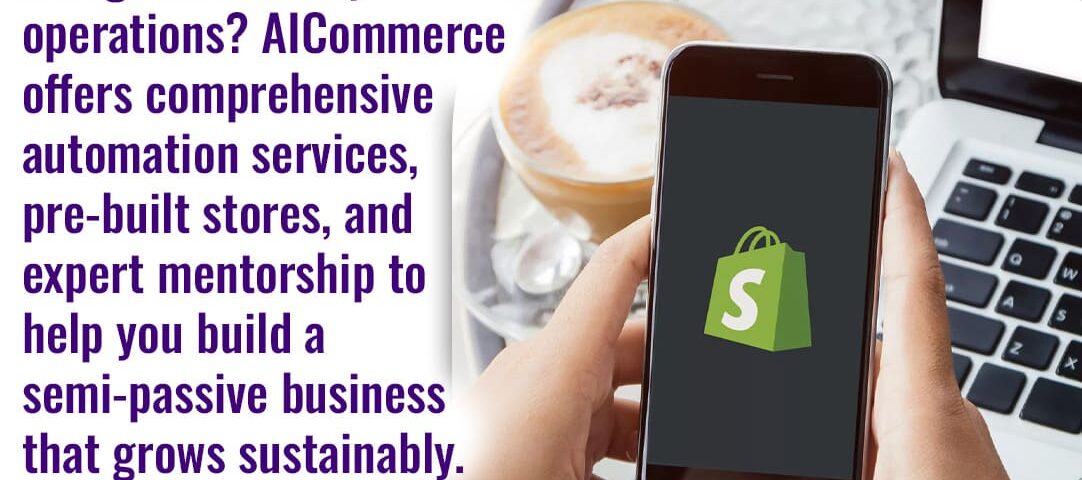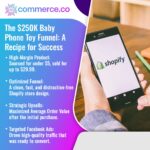
What to Expect From Our Shopify Store Setup Service: A Baby Phone Toy Case Study
October 17, 2025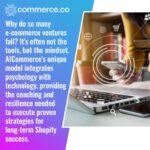
A Case Study: How AICommerce’s Psychology + Tech Beats Traditional E-Commerce
October 31, 2025Running a Shopify business can feel overwhelming. From product sourcing and customer support to advertising and fulfillment, it’s easy to get caught in day-to-day operations without moving closer to growth. When I started AICommerce, I, Peter Szabo, knew the key was combining automation, proven ad frameworks, and one-on-one mentorship so entrepreneurs could run stores that work almost on autopilot.
One of the clearest examples of this approach in action is a case study from the fishing niche. The campaigns show how we turned structured testing and automation into real results. With more than $172,000 invested in ads and over $300,000 in sales generated, this project proves what happens when we focus on scaling the right campaigns. In this blog, I’ll break down the lessons from this case study and explain how we help clients build semi-passive Shopify stores.
Key Takeaways
- We only scale campaigns that prove profitability first. In the fishing niche, we grew budgets only on ads delivering 3x or higher returns.
- We rely on automation to make Shopify stores efficient. This freed us from manual work and gave us faster insights.
- We target high-ticket products for stronger profits. Higher average order values created room to stay profitable as ad costs rose.
- We provide one-on-one mentorship to guide scaling. Coaching gave our client confidence and clarity at critical moments.
- We deliver turnkey Shopify ecommerce solutions. By combining store setup, migration, and ad frameworks, we gave our client a faster route to results.
Why Automation Matters for Shopify Stores in Competitive Niches
When I work with new clients, one of the primary issues I see is a lack of automation. Many Shopify owners are stuck manually updating product listings, chasing suppliers, or checking ads one by one. This slows everything down and makes it nearly impossible to scale. Automation changes that. By applying the right tools, we can handle order processing, reporting, and even ad monitoring without constant manual effort.
Automation is more than just saving time; it multiplies the impact of every decision. For example, automated reports highlight weak ad sets before they burn through budget, and AI-based fulfillment ensures customers get their orders faster, reducing refunds. In the fishing niche store, automation allowed us to manage campaigns across multiple audiences and regions with speed. Instead of reacting days later, we made adjustments in real time, which kept campaigns profitable and allowed us to scale aggressively without losing control.
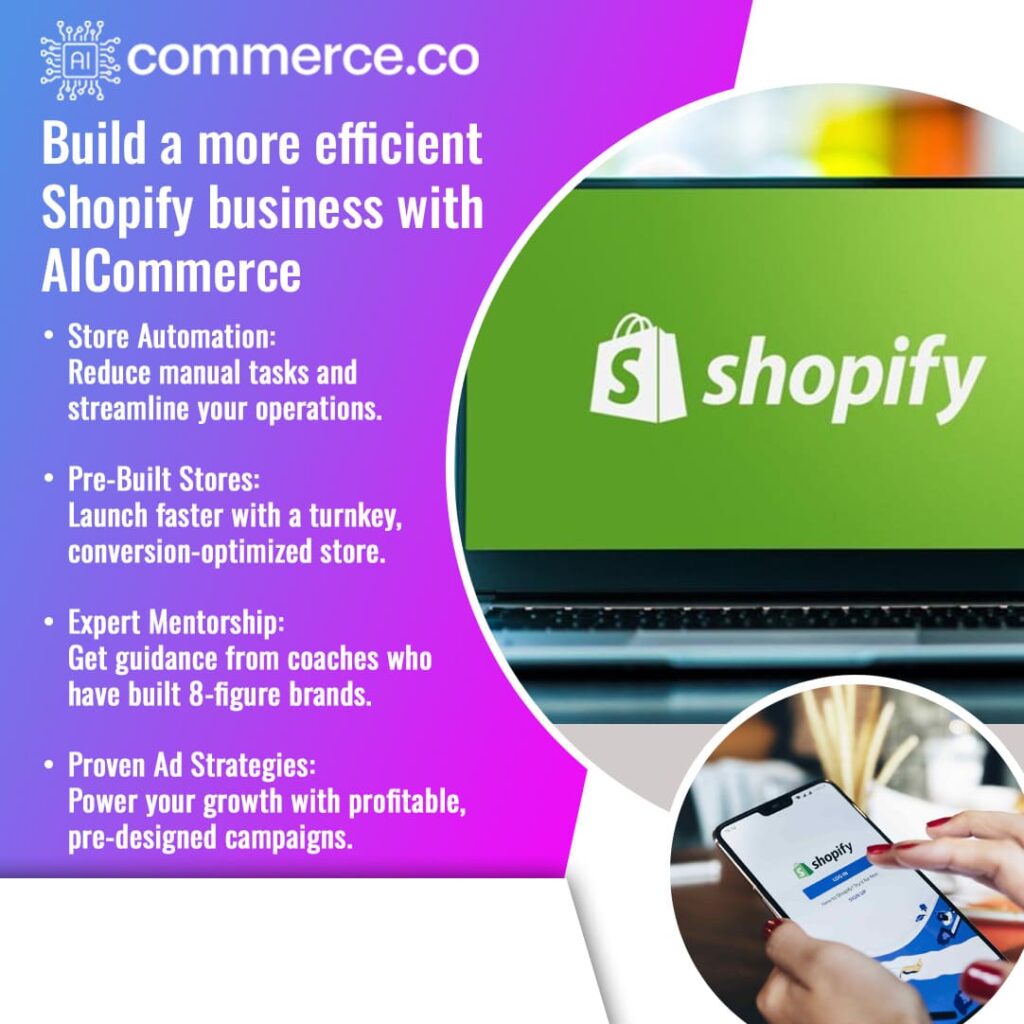
The Fishing Niche Case Study- From Ad Spend to Profitable Scaling
In the fishing niche, we spent over $172,000 on ads and turned it into more than $300,000 in revenue. On average, the account returned a 2.65 ROAS, meaning for every dollar spent, $2.65 came back. That’s the type of performance we look for when building long-term e-commerce businesses.
Not every campaign performed equally. Some hovered around 1.5x or 2x, while others exceeded expectations. One campaign even reached 17x ROAS, which is rare but shows what happens when creative, targeting, and timing all line up perfectly. What mattered most was separating campaigns worth scaling from those better left small.
The biggest lesson here is that scaling only works when the foundation is already profitable. Too many store owners try to scale weak campaigns and watch margins disappear. In this case, we focused on campaigns consistently hitting 3x or higher before increasing budgets. That discipline made scaling possible and kept the store profitable as spend grew from $100 per day to $1,000 per day.
What This Case Study Teaches About Running Shopify Ads
Looking at the fishing niche case study, there are a few lessons that apply to every Shopify store. Above all, testing is non-negotiable. We launched multiple campaigns with different audiences and creatives, and only a small percentage turned into winners. But those winners were enough to build six-figure revenue. Structured Facebook ad campaign setup made that possible by giving us a system for running and cutting campaigns efficiently.
The second lesson is scaling discipline. If you try to scale a campaign with just a 1.5x return, you may break even at best once costs rise. Instead, we doubled down on campaigns showing 5x returns, knowing they would still hold strong around 3x at larger budgets. That approach protected margins as we scaled spend.
The third is the importance of creativity. Ads that started with a question or highlighted a timely discount outperformed generic copy. This pattern interrupt strategy kept click-through rates high and acquisition costs low. For store owners who don’t have the time to master this process, the best move is to hire Facebook ad experts or work with the best Facebook ads agency for ecommerce to avoid wasting budget.
Shopify Store Setup and Semi-Passive Operations
No ad campaign can succeed if the store itself isn’t optimized. That’s why our Shopify store setup service and custom Shopify store design are so important. A high-converting store makes sure that the traffic we pay for actually turns into customers. In the fishing niche case study, we optimized landing pages for speed, mobile design, and clarity. That lifted conversion rates and made scaling ads worthwhile.
We also design operations to be semi-passive. Clients often bring in a trained virtual assistant, and we teach them to manage fulfillment, customer support, and apps. This lets store owners step away from repetitive tasks and focus on strategy instead. In the fishing niche, this structure allowed the client to spend more time reviewing performance and less time fixing operational details. Automation plus delegation is what makes Shopify stores sustainable for the long term.
How Pre-Built and Migrated Stores Fit Into Growth Strategy
Starting with a pre-built Shopify store for sale can save months of setup time. These stores come with tested layouts, apps, and often a product framework that’s ready to launch ads immediately. In the fishing niche, we worked with a store that was built for testing from day one, which sped up results.
For clients who already have a store but aren’t seeing results, Shopify store migration services can make the difference. Migrating to a cleaner, optimized store creates better tracking, faster load times, and more reliable automation. While the fishing niche client didn’t need a migration, many others have doubled their results after moving to a setup that eliminates bottlenecks.
The biggest advantage of pre-built and migrated stores is speed. Instead of losing time solving technical problems, entrepreneurs can focus on running ads and finding winning products. That direct path to testing and scaling is why many of our clients hit six figures faster than those trying to build everything themselves.
Advertising Expertise That Drives Scalable Growth
I’ve spent over a decade managing multi-million-dollar ad accounts, and I’ve learned that success doesn’t come from spending more; it comes from spending smarter. In the fishing niche case study, we applied the same frameworks I’ve refined across hundreds of clients. That meant structured testing, strict budget controls, and rapid creative iteration.
Every weak campaign we cut freed up budget for stronger ones. Instead of spreading money thin, we concentrated spend on campaigns with the highest returns. This approach multiplied growth and made scaling sustainable. Entrepreneurs looking to follow a similar path often benefit from pre-designed Facebook ad campaigns or from working with specialists who understand how to apply these systems. For small businesses, especially, this discipline makes the difference between burning cash and building a profitable store.
Why Campaign Design and Targeting Matter Most
In the fishing niche, ad design and targeting were critical. Ads that opened with a direct question outperformed standard product promotions. This is because they interrupted the scrolling pattern and demanded attention. Strong visuals and clear offers did the rest.
Targeting was equally important. We focused on either the top English-speaking countries or the top 30 GDP markets. This meant every dollar was spent on audiences most likely to buy, which kept acquisition costs manageable and returns high.
Campaigns were also rotated regularly. Underperforming creatives were replaced weekly to avoid fatigue. That consistency kept performance stable over time. These practices can be applied to any niche. Whether it’s fishing products or fitness gear, the principles of creative testing and smart targeting remain the same.
Coaching and Mentorship for Sustainable Store Success
One of the biggest differences in how we operate is that we don’t just hand clients tools; we coach them through the process. In the fishing niche, mentorship helped the client know when to push budgets, when to pause campaigns, and how to adjust strategies mid-launch. With over $100 million in client revenue managed and years of experience, I know the value of having a guide.
AICommerce reviews often highlight how much faster clients grow when they have coaching compared to trying to figure everything out alone. A store isn’t just about products and ads; it’s about making the right decisions consistently, and mentorship provides that clarity.
This guidance is often what separates temporary wins from lasting success. Many clients who started unsure of their next step have grown into confident entrepreneurs because of the structure and support we provide.
Personalized One-on-One Support Makes the Difference
Our support goes beyond group calls. Each client is paired with a coach who connects through Discord and Zoom for real-time help. This means when issues arise, solutions come quickly instead of weeks later.
In the fishing niche case study, personalized coaching played a key role. When ad performance dipped, the coach suggested new creative strategies that revived engagement. When scaling raised costs, adjustments were made to targeting and bidding that preserved margins. These rapid responses kept the store profitable and avoided setbacks that many entrepreneurs face.
We also help clients bring in virtual assistants. These VAs are trained alongside the client, which means the business doesn’t rely solely on one person. This reduces stress, creates more freedom, and builds a store that can operate semi-passively. For many, this balance is what makes running a Shopify store sustainable over the long term.
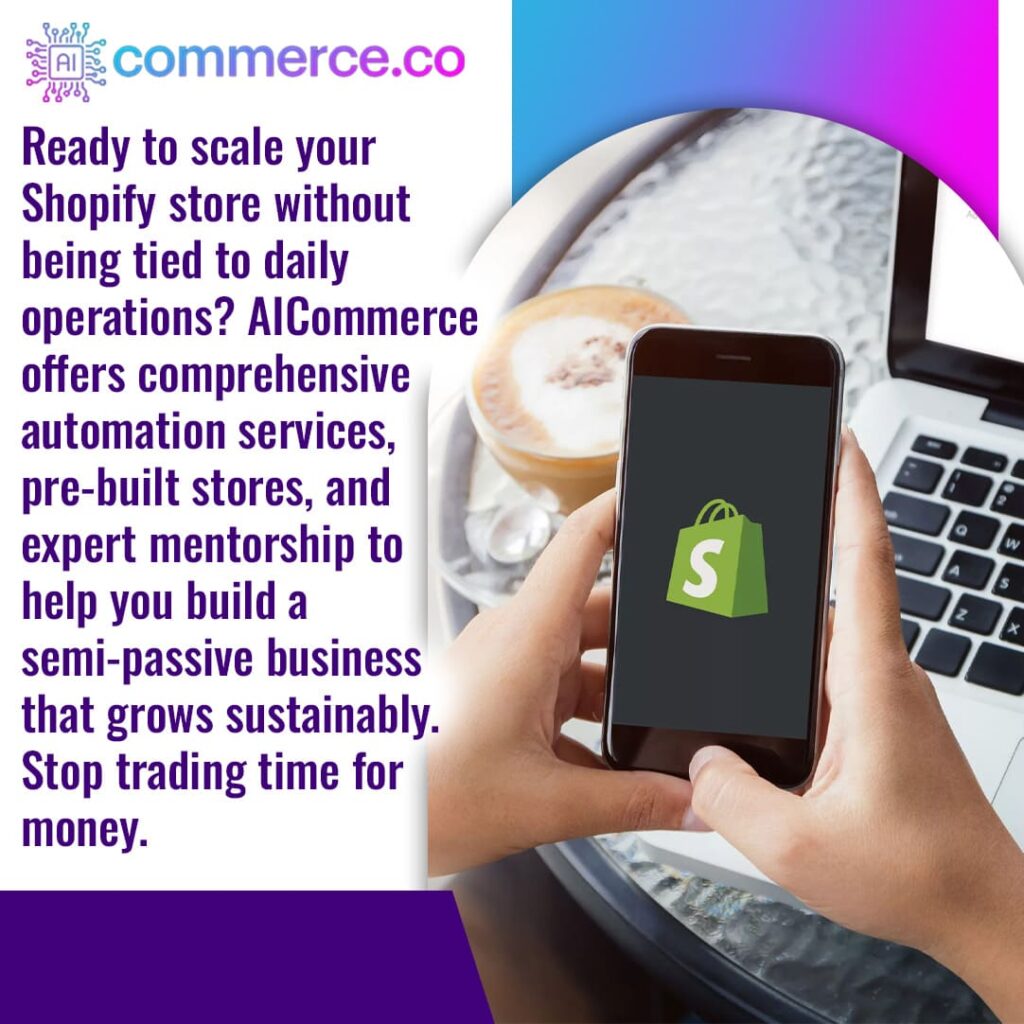
Turnkey Ecommerce Solutions That Set Clients Apart
What makes our system unique is that we deliver everything as part of one model. We don’t just sell coaching, or just ads, or just store design; we integrate all of it. That’s why we call them turnkey Shopify ecommerce solutions.
Clients get access to the best Shopify developers for hire, structured ad frameworks, and personalized mentorship in a single package. This eliminates the trial and error most entrepreneurs face and gives them a proven pathway to results.
In the fishing niche, this turnkey approach meant the store was ready for ads from the start, creatives were tested systematically, and mentorship guided every scaling decision. By combining these elements, the client was able to move from launch to hundreds of thousands in revenue without wasting years figuring it out alone.
High-Ticket Products and Fast Fulfillment as Profit Levers
Profit margins in e-commerce depend heavily on product pricing and shipping times. In the fishing niche, we focused on high-ticket products with average order values above $200. These margins gave us room to absorb rising ad costs while still staying profitable. High-ticket items create the cushion that makes scaling sustainable.
Fast fulfillment was another lever. By working with suppliers who could ship quickly in the U.S. and internationally, we kept customers happy and reduced refund rates. Positive experiences turned into repeat purchases and stronger reviews, both of which reinforced long-term profitability.
Together, high-ticket pricing and reliable fulfillment supported the store’s growth. These strategies are critical for any entrepreneur looking to scale profitably in Shopify.
Lessons for Entrepreneurs from the Fishing Case Study
The fishing niche case study proves that structured systems produce results. The first lesson is to test widely but scale selectively. Launching multiple campaigns will reveal winners, but only those consistently profitable deserve bigger budgets.
The second lesson is the power of automation. Without automation, managing ad spend at scale becomes chaotic and unprofitable. Systems are what make growth manageable. The third is mentorship. Having direct coaching shortens the learning curve and prevents mistakes that cost time and money. The final lesson is that profitability depends on details; from high-ticket items to fast fulfillment, every choice impacts margins.
These lessons apply to any entrepreneur, no matter the niche.
Building a Repeatable System for Long-Term Growth
What excites me most about this case study is not just the revenue numbers, but the fact that the process is repeatable. The same approach can be applied to other niches and products. We start with store setup or optimization, move into structured ad testing, and scale only the campaigns that prove profitability. This system removes the guesswork and replaces it with a proven model.
Whether starting from a pre-built Shopify store for sale or migrating an existing store, the principles remain the same. Automation handles the repetitive tasks, ads drive traffic, and mentorship ensures the right decisions are made. The fishing niche shows that scaling a Shopify store isn’t luck; it’s the result of a clear, repeatable system.
This fishing niche case study shows that when we combine automation, ad strategy, and mentorship, Shopify store growth becomes a predictable system instead of a guessing game.
Scaling a Shopify Store with AICommerce
The fishing niche case study proves what’s possible with the right systems. We took $172,000 in ad spend and turned it into more than $300,000 in sales by focusing on profitable campaigns, automating operations, and providing direct coaching by Peter Szabo.
For entrepreneurs, the takeaway is simple: focus on systems, not luck. With the right store setup, disciplined ad management, and one-on-one support, building a semi-passive Shopify business is achievable.
That’s the model we’ve built at AICommerce, and it’s the same one we continue to refine with every client. To learn more, contact AICommerce by Peter Szabo at [email protected] and book a consultation with us.

